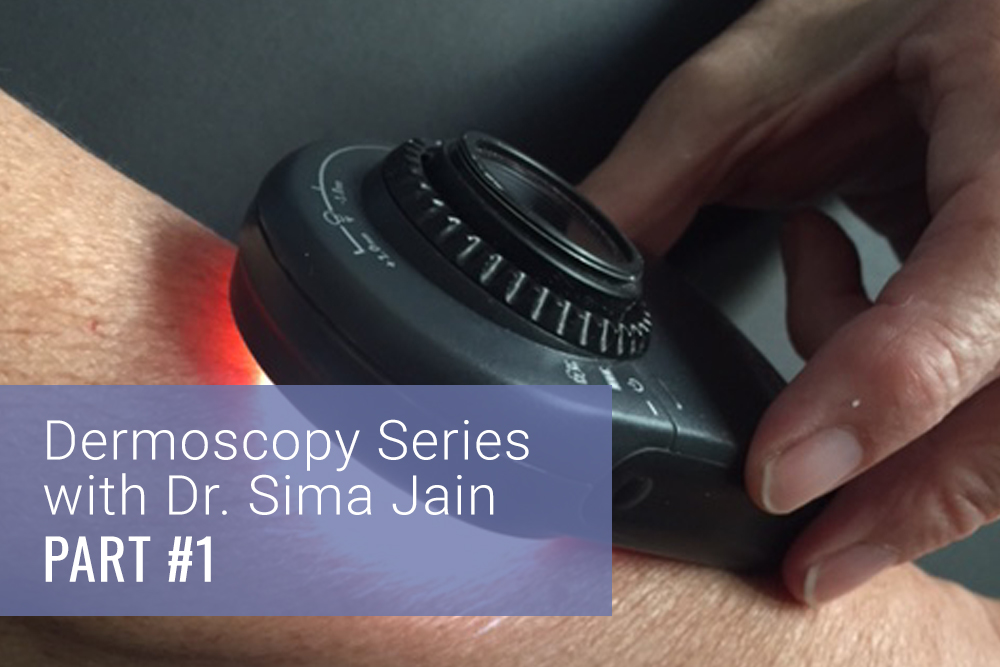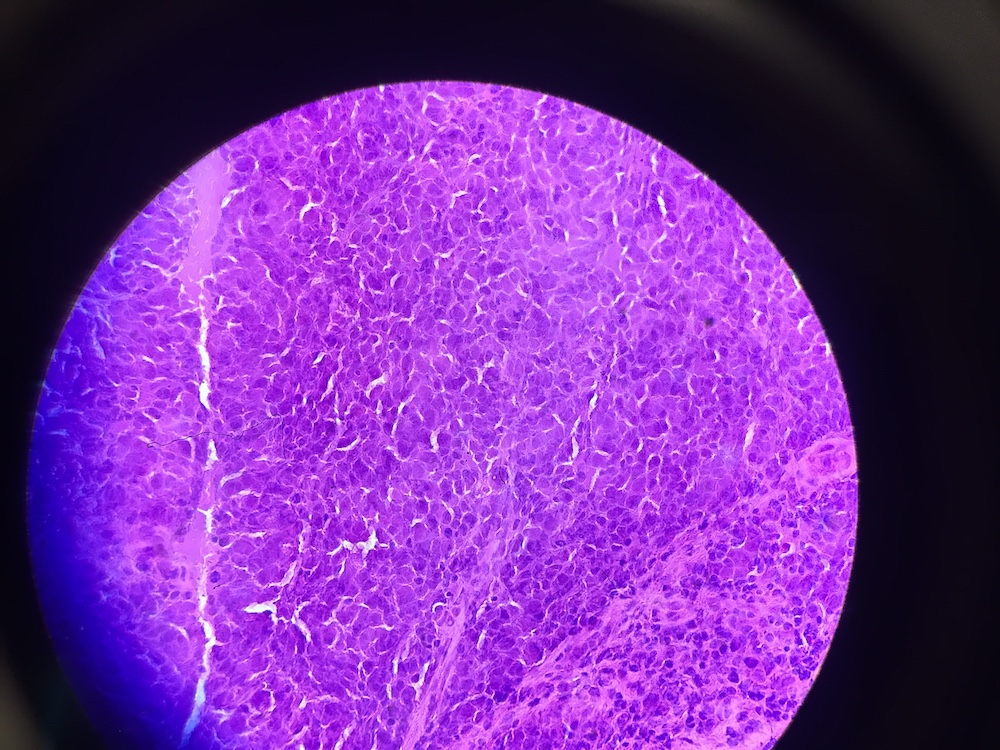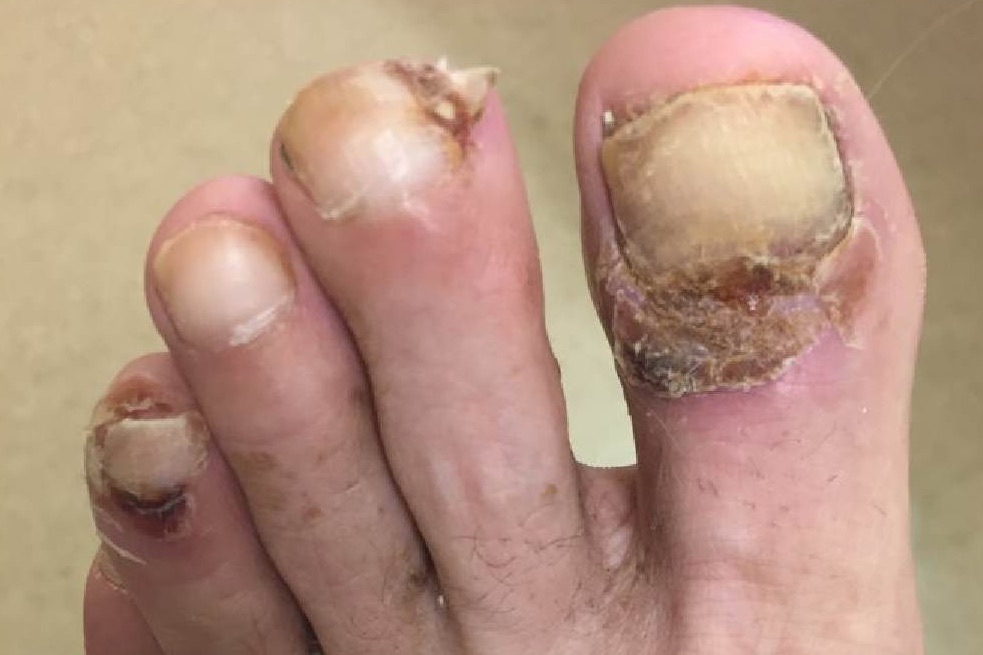Practical Dermoscopy – Part 1
 Introduction
Dermoscopy, also known as epiluminescence microscopy, epiluminoscopy or skin surface microscopy, is a noninvasive technique for examination of skin by using a high quality magnifying lens and powerful lighting system to visualize the skin (Figure 1). Although dermoscopy was initially used for the study of mainly pigmented lesions, in the past several years its utility in non-pigmen …
Introduction
Dermoscopy, also known as epiluminescence microscopy, epiluminoscopy or skin surface microscopy, is a noninvasive technique for examination of skin by using a high quality magnifying lens and powerful lighting system to visualize the skin (Figure 1). Although dermoscopy was initially used for the study of mainly pigmented lesions, in the past several years its utility in non-pigmen …
 Introduction
Dermoscopy, also known as epiluminescence microscopy, epiluminoscopy or skin surface microscopy, is a noninvasive technique for examination of skin by using a high quality magnifying lens and powerful lighting system to visualize the skin (Figure 1). Although dermoscopy was initially used for the study of mainly pigmented lesions, in the past several years its utility in non-pigmen …
Introduction
Dermoscopy, also known as epiluminescence microscopy, epiluminoscopy or skin surface microscopy, is a noninvasive technique for examination of skin by using a high quality magnifying lens and powerful lighting system to visualize the skin (Figure 1). Although dermoscopy was initially used for the study of mainly pigmented lesions, in the past several years its utility in non-pigmen … 

 What are the nail findings in this condition?
A.) Red-white longitudinal bands and v-shaped distal nicks
B.) Oil spots and onycholysis
C.) Clubbing
D.) Dolichonychia
E.) Trachyonychia
To find out the correct answer and read the explanation, click here.
Brought to you by our Brand Partner
…
What are the nail findings in this condition?
A.) Red-white longitudinal bands and v-shaped distal nicks
B.) Oil spots and onycholysis
C.) Clubbing
D.) Dolichonychia
E.) Trachyonychia
To find out the correct answer and read the explanation, click here.
Brought to you by our Brand Partner
…  You are called to evaluate a patient that recently returned from a trip to Mexico with these cutaneous findings. Upon further questioning, he reports being on oral doxycycline for Lyme disease for the past 14 days. What is the major contributor of this cutaneous reaction?
A.) UVA
B.) UVA1
C.) UVB
D.) UVC
E.) Visible Light
To find out the correct answer and read the explanation, click he …
You are called to evaluate a patient that recently returned from a trip to Mexico with these cutaneous findings. Upon further questioning, he reports being on oral doxycycline for Lyme disease for the past 14 days. What is the major contributor of this cutaneous reaction?
A.) UVA
B.) UVA1
C.) UVB
D.) UVC
E.) Visible Light
To find out the correct answer and read the explanation, click he …  A nodule biopsy is performed from a 70-year-old woman's arm. The histology is shown here. What is the diagnosis best stained with?
A.) CD56
B.) CEA
C.) S-100
D.) TTF-1
E.) CK5-6
To find out the correct answer and read the explanation, click here.
Brought to you by our Brand Partner
…
A nodule biopsy is performed from a 70-year-old woman's arm. The histology is shown here. What is the diagnosis best stained with?
A.) CD56
B.) CEA
C.) S-100
D.) TTF-1
E.) CK5-6
To find out the correct answer and read the explanation, click here.
Brought to you by our Brand Partner
…  The patient developed this cutaneous adverse reaction 2 weeks after starting a clinical trial medication. What is the mechanism of action of the culprit medication?
A). Epidermal growth factor receptor (EGFR) inhibitor
B.) Tumor necrosis factor (TNF)-alpha inhibitor
C.) Smoothened inhibitor
D.) BRAF inhibitor
E.) Programmed cell death (PD)-1 inhibitor
To find out the correct answer a …
The patient developed this cutaneous adverse reaction 2 weeks after starting a clinical trial medication. What is the mechanism of action of the culprit medication?
A). Epidermal growth factor receptor (EGFR) inhibitor
B.) Tumor necrosis factor (TNF)-alpha inhibitor
C.) Smoothened inhibitor
D.) BRAF inhibitor
E.) Programmed cell death (PD)-1 inhibitor
To find out the correct answer a …